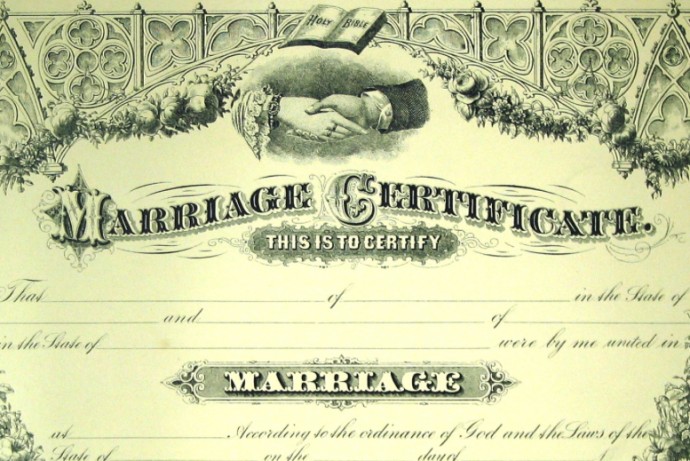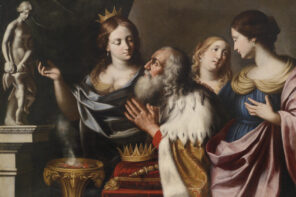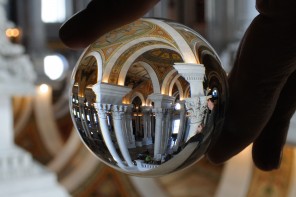This morning a judge freed Kim Davis, the heretofore obscure Kentucky county clerk who has made national headlines because of her refusal to issue marriage licenses to same-sex couples. As of this writing, her next move has not yet been broadcast, but the story is certain to continue.
Part of what makes Davis’s case compelling is her claim to religious freedom and the implicit question her behavior raises about what constitutes permissible civil disobedience. (It is worth noting that, contra to their current outcries in favor of obeying the law and staying neutral, liberals tended to take a pro-civil disobedience position when clerks were illegally issuing licenses to same-sex couples in the mid-2000s.) But I think these shiny objects are occluding something more fundamental.
I want us to consider, instead, the root object under debate—the marriage license itself.
Contemporary American culture tends to view the marriage license as a completely secular governmental device (the mechanism by which a couple can enter into a legal civil marriage). In this view, it is, then, certain people, such as Kim Davis, who impose their religion onto this otherwise neutral license. This understanding recently made possible a funny joke—really a send up of the Davis affair—about an Amish person taking a job at the DMV and then refusing to issue drivers licenses to anyone because of her personal religious objections.
There is, however, good reason to doubt this formulation. I think we should, instead, view the marriage license as a religiously charged means of regulating marriage. The U.S. system of state-issued marriage licenses originated in John Calvin’s sixteenth-century Geneva during the Protestant Reformation. As John Witte, Jr. notes, these state-issued licenses were originally devised as a way to convey the consent of, not only the couple getting married, but also “of parents, parishioners, and citizens in the process” of marriage formation. This role of giving third-party consent to union is still operative.
In this marriage license system created by the Reformed tradition, the state and the church have separate but complementary roles to play in advancing a religious (read Christian) society. As Mary Anne Case has shown, U.S. Protestants are often troubled by changes in state marriage laws because of how they have long used these laws to manifest their religious visions of marriage in society.
In other words, this is an example of Janet R. Jakobsen and Ann Pelligrini’s point that, in the U.S., “the secular state’s regulation of the sexual life of its citizens is actually religion by other means.” All of this aligns, generally speaking, with Winnifred F. Sullivan’s recent remark that “[e]stablishment, not free exercise, is the natural way of government, in the United States and elsewhere.” This form of establishment, for example, helps explain why religious leaders can simultaneously serve as public officials while conducting weddings in their religious roles and in religious settings.
But this close relationship between (certain) religious groups and the state is fraying. In the U.S., marriage has been undergoing a profound process of disestablishment over the latter half of the twentieth and first decades of twenty-first centuries. It has progressively become more plastic, less gendered, etc. (See, for example, Nancy Cott’s discussion of this phenomenon).
It is the slow decoupling of church and state around marriage that has many Protestants worried and frustrated. So far 2015 has seen an uptick in reactionary moves by certain Americans on this front because of the rapid legalization of marriage for same-sex couples (accomplished mostly through court decisions). These anti-disestablishment efforts include, among other efforts, some lawmakers’ attempts to restrict the issuing of the marriage licenses to religious leaders.
Now Kim Davis, through her capacity as a county clerk, is trying to forestall this fraying by refusing to issue marriage licenses to same-sex couples. Sarah Posner points out that while Davis is an Apostolic Christian—a group which claims a “direct line from the early church,” as Anthea Butler describes here— her insistence on God’s authority is in line with Christian Reconstructionist theology.
The Christian Reconstruction movement seeks, as John Calvin did centuries prior, to have government operate from a Christian basis, even though the church remains separate and independent. In other words, Davis is fundamentally opposed to the disestablishment of marriage and that is the cause of her freedom of religion claims that the U.S. Supreme Court refused to hear. She wants civil marriage to remain, at its roots, a form of religious marriage. Davis’s claim that she was refusing to issues marriage licenses under “God’s authority” is not as bizarre as it initially sounds.
What I am saying, in short, is that the Kim Davis affair is an epiphenomenal event in the slow process of secularizing the religious marriage license and marriage more generally in the U.S.
Correction: an earlier version of this story linked Apostolic pentecostalism with the Calvinist-based Christian Reconstructionist movement. The traditions share an emphasis on the primacy of the Bible over civil law, but they differ both historically, as Sarah Posner notes, and on key theological points. –The Eds




